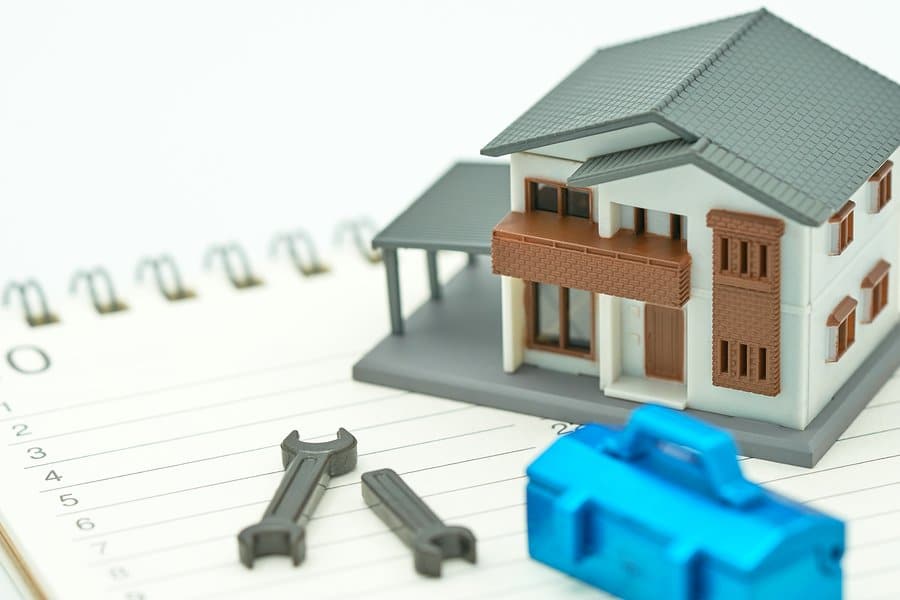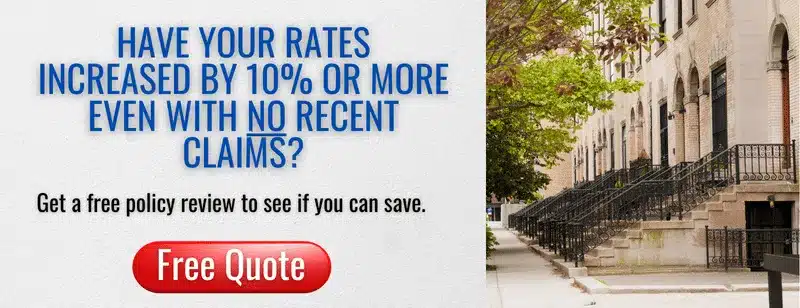A Guide to Landlord Property Maintenance for NYC Building Owners

There’s always a to-do list when it comes to landlord property maintenance, whether you own a multi-family brownstone in Park Slope or an apartment building in Astoria. Something always needs repair, replacement, cleaning or disposal.
Yes, your tenants care about how well your property is maintained. More importantly, so does your insurance company. And for landlords in New York City, the NYC Department of Housing Preservation and Development (HPD) also has an interest.
Not keeping your property well maintained can lead to fines and other penalties. Poor housekeeping can also affect your premiums and even the ability to obtain insurance coverage.
Property Inspections
When you apply for property insurance, your insurer-to-be will inspect your property for potential hazards and other factors that increase the chances of a claim. Proper landlord property maintenance is one of the things that the inspector will check.
After all, the company is sharing the risk with you. Like you, the insurance company wants to protect its investment.
Once the initial inspection is completed, you’re not necessarily off the hook. Insurance companies reserve the right to inspect your property as long as the policy is in force. An insurer can also increase your premiums or cancel your policy as a result of what the inspector finds.
Landlords in New York City need to plan on additional inspections as well:
- At least once every four years, Local Law 152 requires that gas lines are inspected by a licensed master plumber (excludes one- and two-family homes), based on community district. Even buildings without gas piping must hire a registered design professional and submit an inspection certification confirming the absence of gas piping.
- Local Law 55 mandates annual inspections for indoor allergen hazards, such as pests and mold.
- In some cases, New York City expects the landlord to inspect an apartment to determine if window guards are required.
And the list goes on.
Routine Landlord Walk-Throughs
Many building owners think of maintenance as an onerous annual or semiannual chore, like spring cleaning. But it doesn’t have to be.
Do you have five minutes to spare? Take a quick walk-through of the property to spot easily corrected issues. Specifically, look for the following:
- Hallways are clear with no clutter.
- Exit signs and lights are operating.
- Handrails are tight and sturdy.
- Stairways are in good repair, with no broken, worn or loose steps.
- Portable fire extinguishers are operational. (Check the expiration dates.)
- Circuit breaker boxes and water shutoff valves are easily accessible. (In addition, all building personnel should know where they are.)
- Sidewalks are clear and in good repair.
- Grounds are clear, including decks, porches and fire escapes.
Repeat this fast, visual inspection on a regular basis—at least once a month.
Landlord Property Maintenance Checklist
Next, use this handy checklist, courtesy of Distinguished Programs, to maintain your property so problems are less likely:
Annual Maintenance
- Sprinkler Systems. Schedule an inspection by a qualified inspector.
- Plumbing. Check for water damage. Look for leaks or unusual noises.
- Heating/HVAC Systems. Schedule annual maintenance service and change filters.
- Hot Water Heaters. Drain the heaters, remove sediment, and check pressure valves.
- Fireplaces. Clean chimneys.
Spring and Fall Maintenance
- Gutters and Downspouts. Remove leaves and debris.
- Smoke and Carbon Monoxide Detectors. Check for proper operation, and replace batteries—until all systems are replaced with sealed-battery detectors.
- Roofs. Check roof-to-wall connections, and examine flashings for wrinkles or tearing. Also, inspect for leaks, as well as missing, loose or damaged shingles.
- Dryer and Exhaust Vents. Check and clean exterior vents.
- HVAC Systems. Look for screw or latch updates, gasket repairs and missing screw replacements.
Winter Maintenance
- Exterior Plumbing. Drain and winterize outdoor faucets.
- Heat. Maintain at least 55° degrees Fahrenheit in common areas.
- Snow and Ice. Keep sidewalks and steps clear, and maintain a log documenting snow/ice removal.
Routine Maintenance
- Locks. Make sure all are functioning properly to ensure only authorized access.
- Air Filters. Clean or replace air filters.
- Lamps. Dust lamps, and clean lens surfaces.
- Lights. Inspect interior and exterior lights.
- Sidewalks and Steps. Inspect and repair any cracks, as well as any height differentials of ½” or more.
- Debris. Remove from sidewalks and steps as soon as possible.
- Dryers. Clean lint after every use.
Know Your Responsibilities
New York City landlords have other responsibilities besides maintenance. HPD enforces many state and city codes, as outlined in the recently released 2024 edition of The ABC’s of Housing. Here’s an overview, with links to more in-depth information:
- Gas. Gas must be restored immediately when gas for heat, hot water or cooking is disrupted
- Heat and Hot Water. Hot water must be available every day. Heat must be provided October 1 – May 31.
- Indoor Allergen Hazards (Mold and Pests). Units must be free of mold and pests, including mitigating the conditions that cause those problems.
- Bedbugs. As noted above, landlords must mitigate all pests. NYC also requires an annual bedbug filing.
- Lead-Based Paint. Lead paint hazards must be identified and remediated in apartments where young children are present.
- Smoke and Carbon Monoxide Detectors. These protective devices must be present and in good working order.
- Window Guards. New York City requires installation of approved window guards in dwelling units and common areas where children under 10 are present.
- Basement and Cellar. These subterranean spaces may not be lawfully rented unless they meet the minimum requirements for light, air, sanitation and egress, and have received approval by the Department of Buildings (DOB).
- Required Signage. The state and city require more than two dozen posted notices and notifications to tenants; learn more about required signage.
- Outlet Covers in Public Areas. Outlets in buildings with three or more residences must be covered in common areas.
- Fire Safety. Self-closing doors, smoke alarms, fire safety plans, clear and unobstructed exits and stove covers are required in most cases; learn more about fire safety requirements.
- Stove Knob Covers. Gas stoves must have knob covers in units where children age six years or younger are present.
Be aware that the penalties for not meeting these requirements can add up quickly.
Keep Your Eyes Open
Every time you, your property manager or maintenance people visit the property, check everything you pass. Create a checklist as part of your standard procedures.
- Is a handrail loose or missing? (Any set of more than three steps requires a sturdy handrail.)
- Are any bulbs burnt out or flickering?
- Are all required signs and notices posted?
- Do locks and smoke/carbon monoxide detectors exist where legally required, and are they in good working order?
- Is there any peeling paint?
- Are any windows stuck or doors blocked?
Good landlord property maintenance is just good business. In the long run, proper maintenance can save you a lot of headaches.
If you have any questions about insurance coverage or would like a free building/landlord insurance review, please call us at 877-576-5200.

